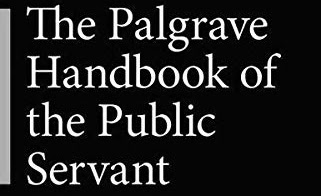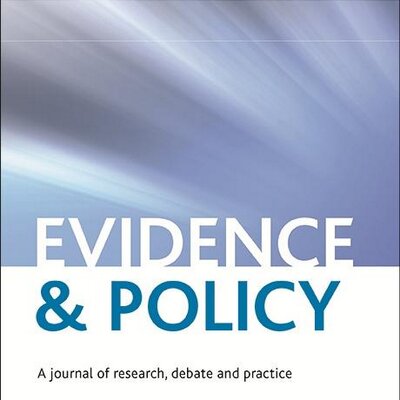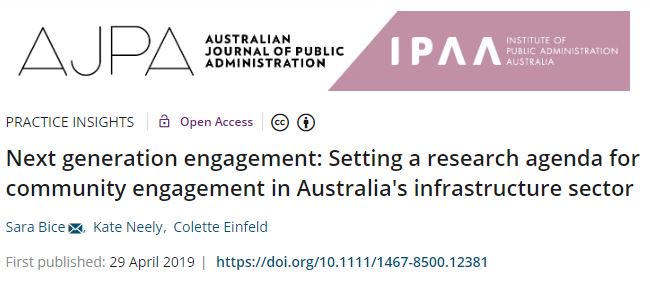
Playing by the rules? How community actors use experts and evidence to oppose coal seam gas activity in Australia
At the University of Melbourne I was working as a research fellow on an Australian Research Council funded project exploring coal seam gas activity in Australia. This paper was written with my colleagues on the project and examines how people in the community respond to and use evidence in energy policy making.
Evidence-Based Policy Making advocates for greater attention to evidence, and particularly technical evidence and expertise, in developing policy. This pervasive paradigm presents community actors with a conundrum: how to engage in ways that are consistent with the norms and expectations of policy consultation, whilst also representing the nature and nuance of their lived experience? In this paper we explore one response to this conundrum, in which community actors adopt and adapt technical knowledge claims alongside their lived experience to pursue their case.Using the conflict over Coal Seam Gas development in New South Wales, Australia, we explored community actors’ interpretations and use of evidence and expertise in seeking to make their voices heard and their knowledge count. Analysis of qualitative interviews found community actors seemed compelled to conform with expectations of policy influence, producing and using technical knowledge and evidence, and drawing on scientific expertise and evidence, presenting these in a rational and objective way. This research also finds a complicated relationship between different forms of knowledge, with local knowledge enhancing technical expertise. Emotions, though deeply felt by the community actors in our research, were not seen as convincing to policy decision makers. The Evidence-Based Policy Making paradigm seems to be constraining what community actors feel they must contribute to be seen as legitimate actors, as well as how they contribute it.

Nudge and co-design: complementary or contradictory approaches to policy innovation?
This paper, co-authored with my colleague Emma Blomkamp, came about from a meeting at an academic conference. My research focussed on nudge, and Emma’s on co-design. Over a coffee or two we realised that in academic scholarship these policy approaches were often seen as distinct but in practice they were emerging together. This paper arose from our curiosity about this tension, to see if they were compatible in public policy.
Nudge and co-design are gaining popularity as innovative approaches to solving similar policy problems. Nudge is an approach to public policy that changes the context in which decisions are presented to citizens in order to encourage a particular choice. Co-design uses creative and participatory methods to engage citizens, stakeholders and officials in an iterative process to respond to shared problems. Both nudge and co-design supposedly achieve more effective outcomes, address big societal problems, and, in contrast to traditional policy approaches, consider humans’ actual behaviour in a real-world context. In practice, we see them emerging and even merging together, despite significant tensions and contradictions between them. We critically examine the use of the approaches as policy instruments and consider the instrument constituencies that support them. By comparing and contrasting the two concepts in scholarship for the first time, the article highlights the assumptions underpinning the use of both nudge and co-design, arguing that each approach has its own underlying philosophy and claims on knowledge and authority. We reflect on the implications for policy effectiveness, political trust, and subsequently on government legitimacy.

Should an Ethical Public Servant Nudge?
I was thrilled to be invited to contribute this chapter to The Palgrave Handbook of the Public Servant. I have previously presented a paper on the ethics of nudge at an academic conference and explored this in other research. This was an opportunity to draw together these ideas and ask the (I think!) important question ‘should an ethical public servant nudge?’
Public servants around the world have embraced nudges. Using nudges, public servants can encourage individuals towards a particular choice by changing the way the decision is presented. There are now over 200 institutions applying behavioral insights to public policy, with dedicated behavioral insights teams in countries such as Japan, Singapore, UK, Australia, and Germany. It is so popular that the approach has been described as a “policy movement” and the “default policy option.” Advocates argue that by using nudges and behavioral insights, public servants can help people make better decisions. Yet critics from both academia and the public claim that the use of nudges is unethical. It is seen as a manipulation of people’s choice, and contradicts ideals of transparency in government. This chapter explores the ethical challenges to using nudges and behavioral insights and asks – should an ethical public servant nudge? The chapter first looks at the concepts of nudge and behavioral insights and their increasing use in public policy then explores the debates around the ethics of nudge. The chapter concludes by arguing that many of the ethical issues relate to particular interpretations of nudge and behavioral insights and considers if it is ever appropriate for public servants to nudge.

Nudge and evidence based policy: fertile ground
This paper explores how nudge and evidence-based policy making have become intertwined, if not conflated by public servants. I first presented this paper at the International Conference of Public Policy in Singapore, and after some great feedback and discussions, developed it further before it was accepted into Evidence and Policy. This was my first sole authored publication to come from my thesis.
Nudge is an approach to public policy that changes the decision-making environment to encourage citizens to make a particular choice. The approach has been eagerly adopted by administrations around the world, with some governments establishing dedicated nudge units to advance their use. One reason proposed for nudge’s popularity is that it supports evidence-based policy. Nudging seems to be firmly positioned in evidence-based policy rhetoric, and encourages the use of Randomised Control Trials to determine the effectiveness of a policy. There is little empirical understanding on whether nudge’s association with this rhetoric has contributed to its increasingly widespread application. This research explores how nudge is understood in relation to the evidence-based movement, from the perspective of those designing, developing and implementing nudge policies. In-depth, qualitative interviews were undertaken with policymakers in Australia. This paper finds policymakers perceive an interconnected relationship between nudging and evidence-based policy, with each providing fertile ground for the growth of the other. Consequences for scholarship and practice are discussed including implications for what constitutes legitimate evidence in the public service.

Next generation engagement: Setting a research agenda for community engagement in Australia’s infrastructure sector
S Bice, K Neely, C Einfeld in Australian Journal of Public Administration 78 (2), 290-310
This practice paper details a project co-designed with community engagement practitioners. It was written with my other chief investigators on the research project which explored the role of community engagement in infrastructure projects. This paper demonstrates the importance of research for practice, and also including different types of expertise in research design.
The global infrastructure sector is thriving. But community opposition to major projects is also rising. Australian examples demonstrate the policy backflips, reputational pitfalls, and financial costs of project delays and cancellations. Failures to engage communities are surprising, given the widespread adoption of community engagement (CE) principles and the increasing professionalization of CE roles. If acceptance of the need for CE in infrastructure is more widespread than ever, why are we not seeing smoother project delivery, reduced protest, and cost savings? This paradox is the driving force behind the Next Generation Engagement project. This article offers a practitioners’ perspective to introduce the project and present key findings from its 12‐month pilot study aiming to establish a transdisciplinary, industry‐led research agenda for CE in Australia's infrastructure sector. The article contributes to our understanding of CE literature and research codesign. It maps out the top five priority themes for future research to support infrastructure selection, planning and delivery. The research agenda provides guidance for policy, and practice, offering consolidated, research‐based insights for policymakers and practitioners.

Social media and community relations: Five key challenges and opportunities for future practice
Einfeld, Colette, Sara Bice, and Chen Li. “Social media and community relations: Five key challenges and opportunities for future practice.” Extracting Innovations: Mining, Energy, and Technological Change in the Digital Age (2018): 287.
The chapter in this book was developed from research on an ARC Discovery grant I was working on. It considered the role of community voices in social media and identified different roles and opportunities for community engagement in energy infrastructure.
You must be logged in to post a comment.